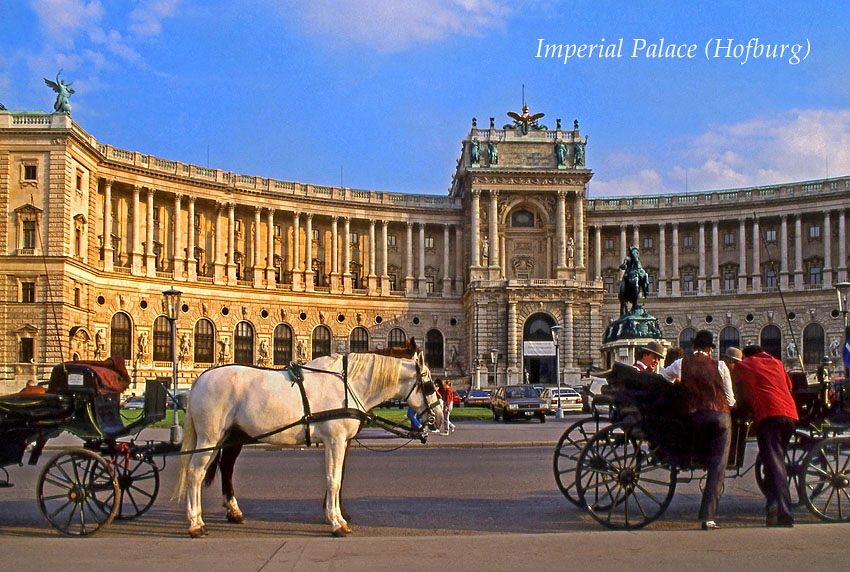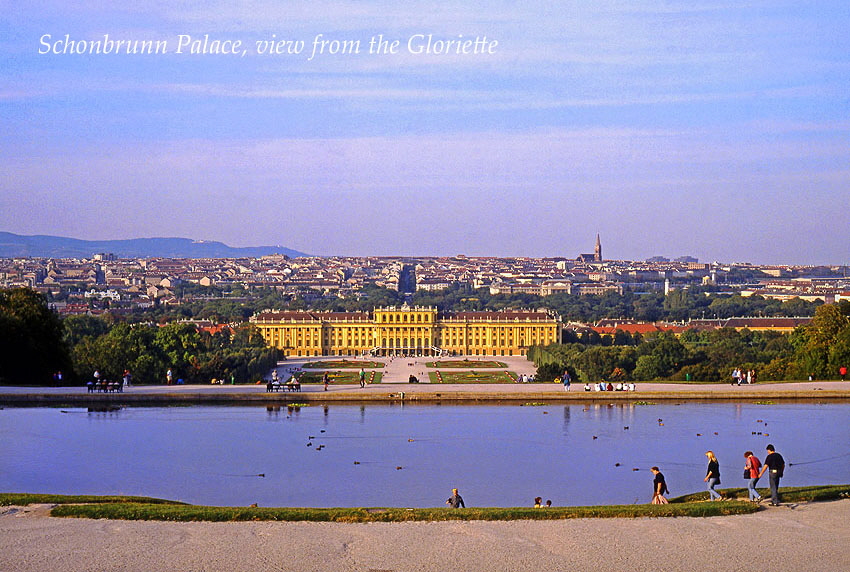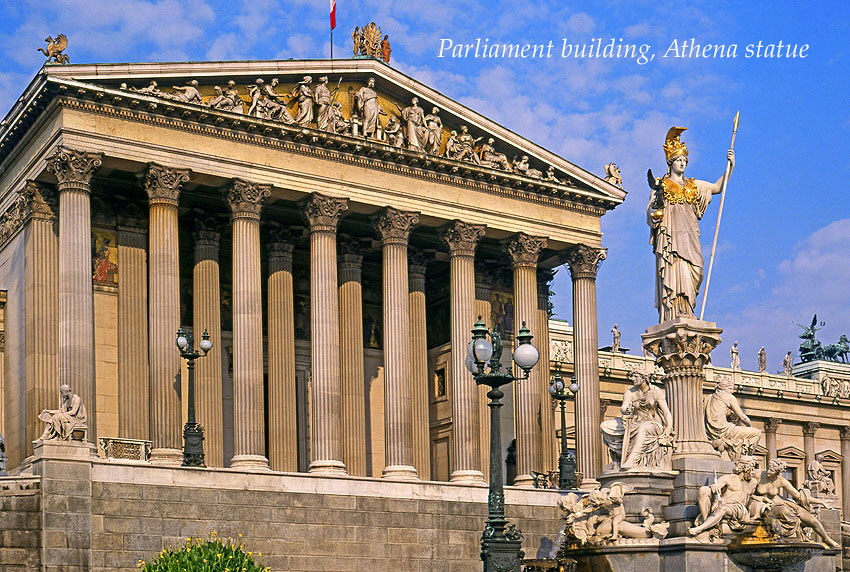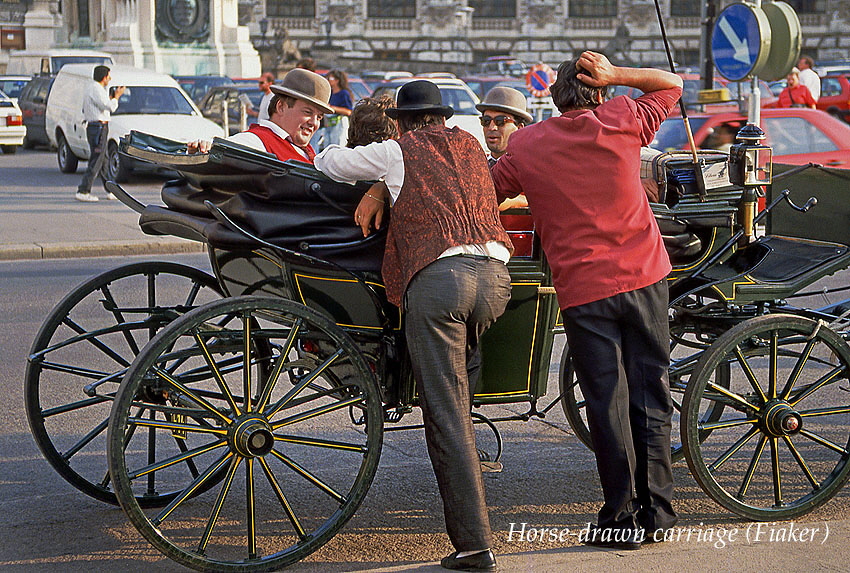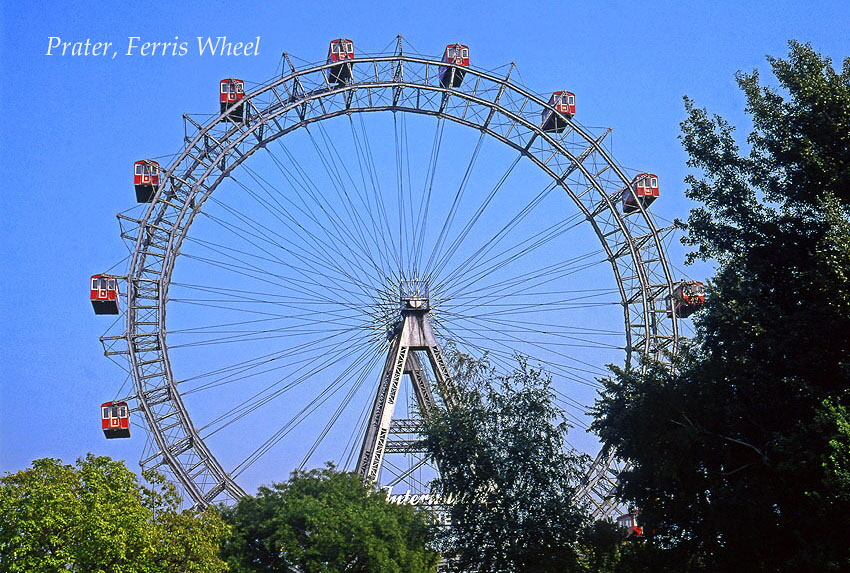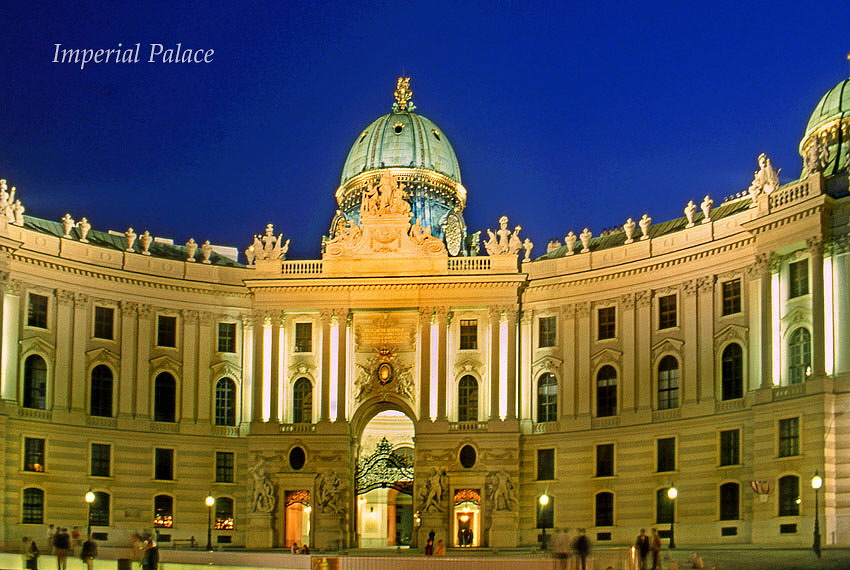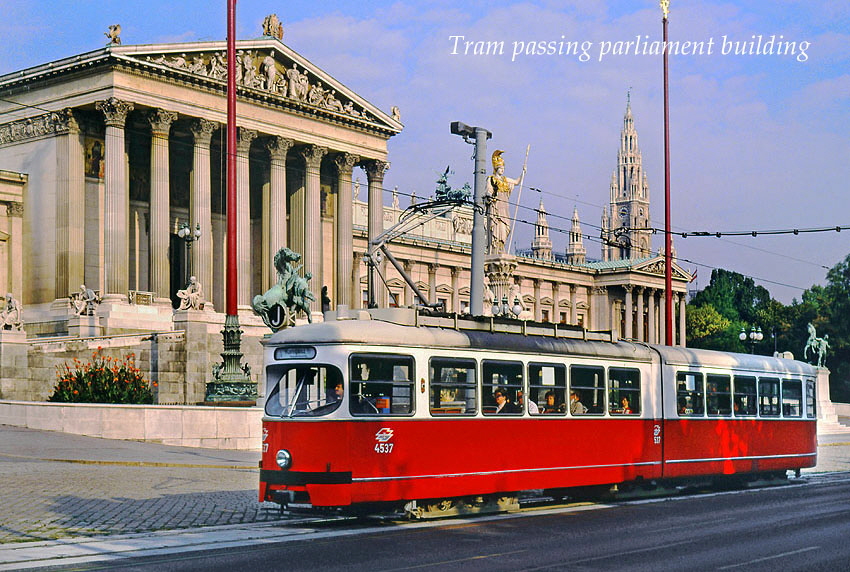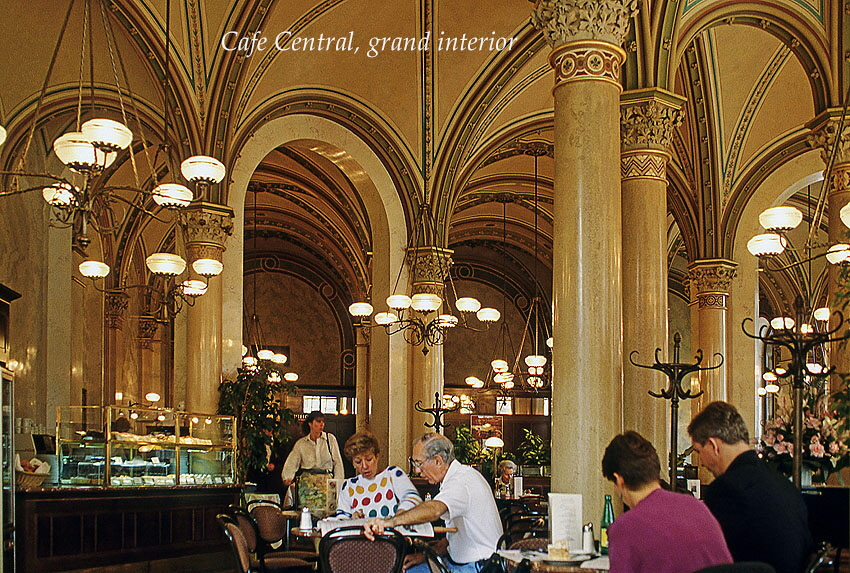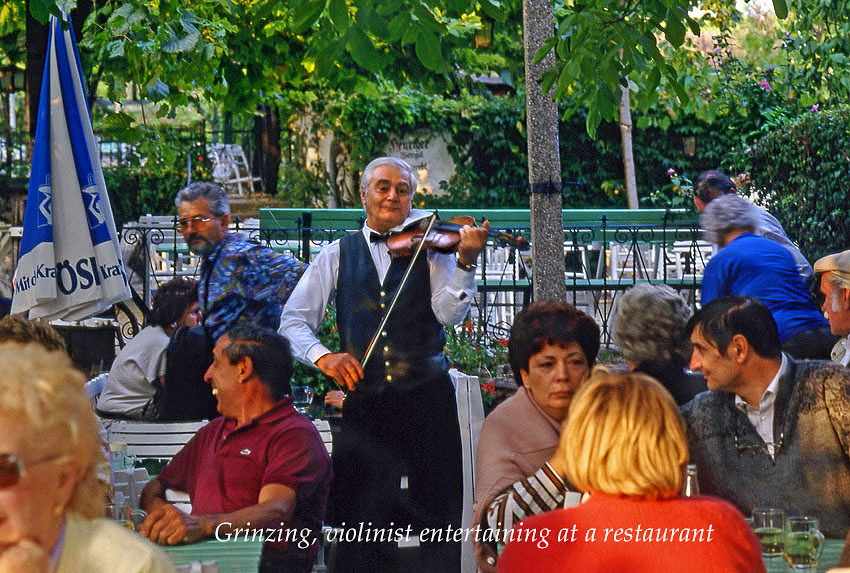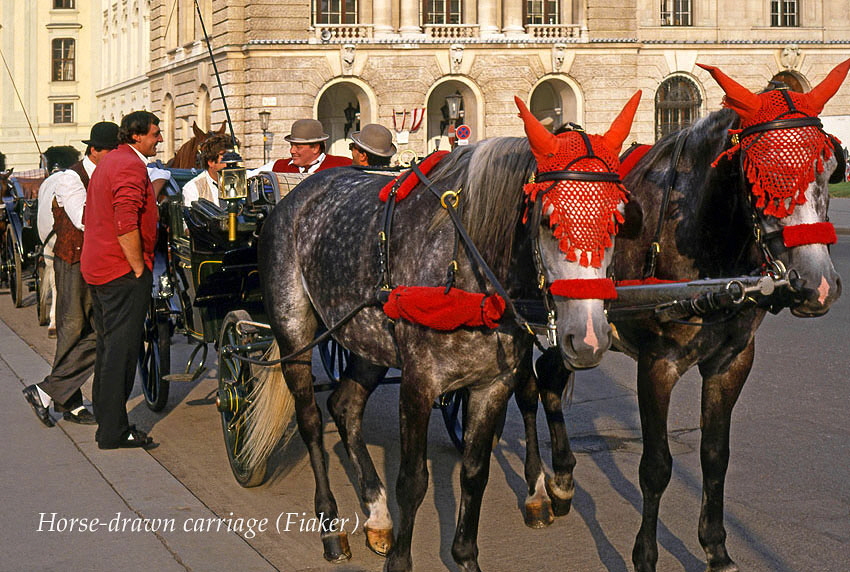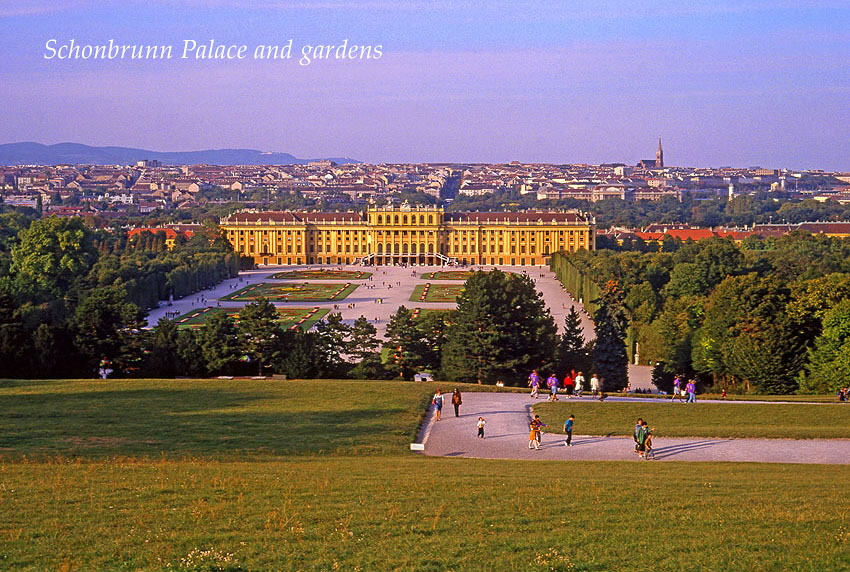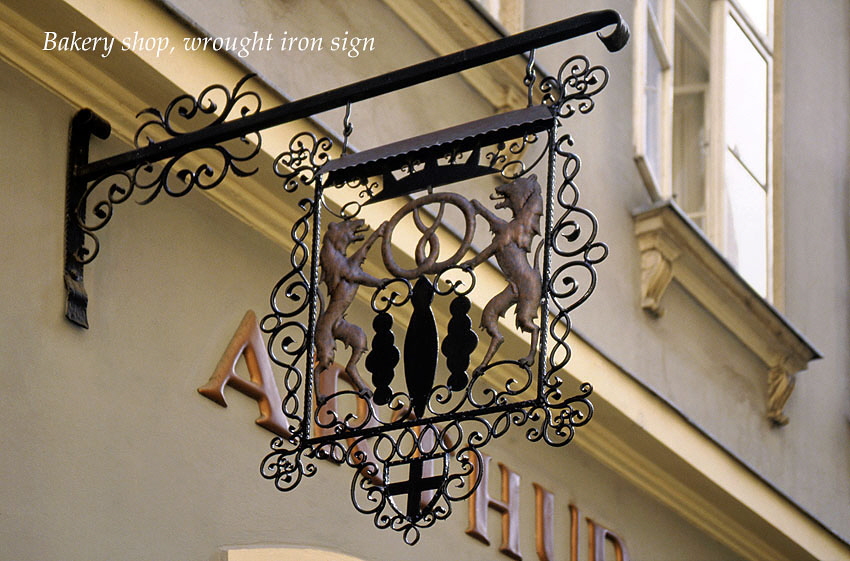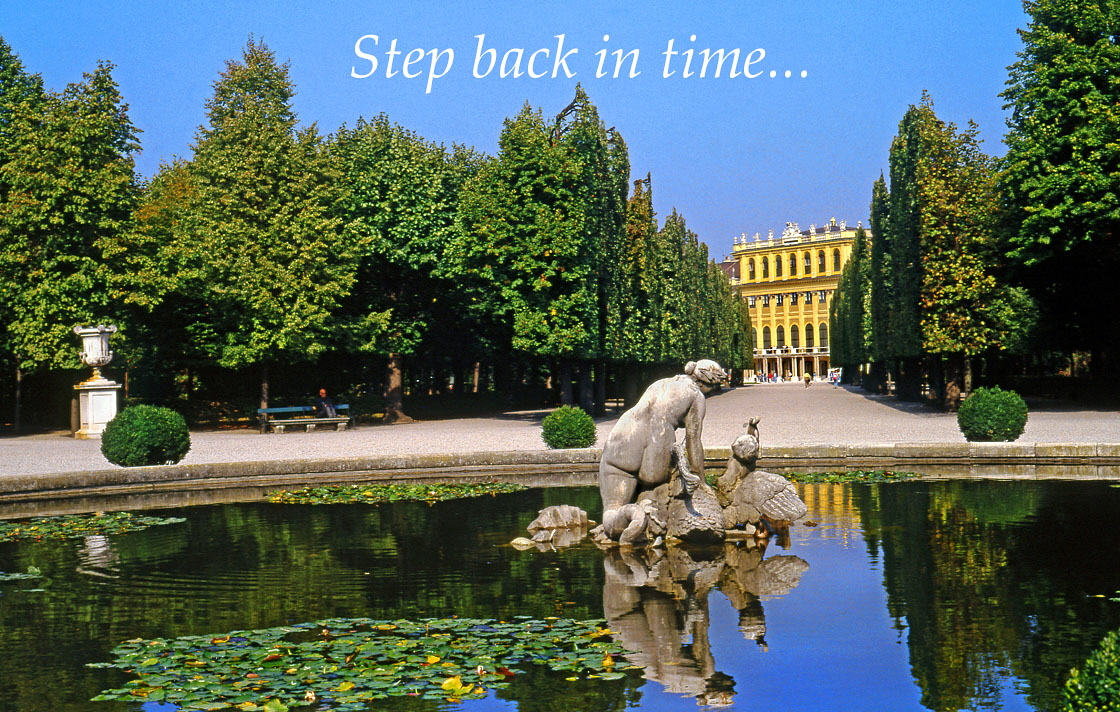
Renowned for its outstanding architecture, good food and cultural delights,
Vienna is perfect for a long weekend break.
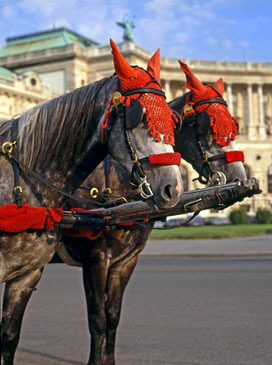
A visit to Vienna is like taking a step back in time. Many of its stately buildings date from the 17th and 18th centuries. Horse-drawn carriages clip clop their way through the streets just as they did 100 years ago, and the music of Strauss and Mozart is still very much alive. Visitors to this city of culture can enjoy the finer things in life like art, music and good food, and problems are solved over a glass of wine and an apple strudel.
Its high quality of life and prosperity, has made it one of the world’s most sort after cities to live in, as well as attracting nearly
7 million tourists a year.
Top of the list of sights is the magnificent Schonbrunn Palace, at one time summer residence of the Hapsburg empire. Schonbrunn, meaning ‘beautiful spring’, is one of the most important cultural and historic monuments of Austria. Of the palace’s 1441 rooms, 45 are open to the public, as are the immaculately landscaped gardens. Opposite the palace, and at the far end uphill, is the splendid Gloriette structure, which also has an observation deck offering panoramic views of the city. It is easily possible to spend a whole day, exploring the palace rooms, and various themed gardens with fountains, ponds and numerous statues.
Imperial Palace
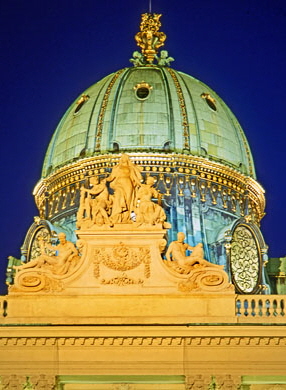
Schonbrunn Palace
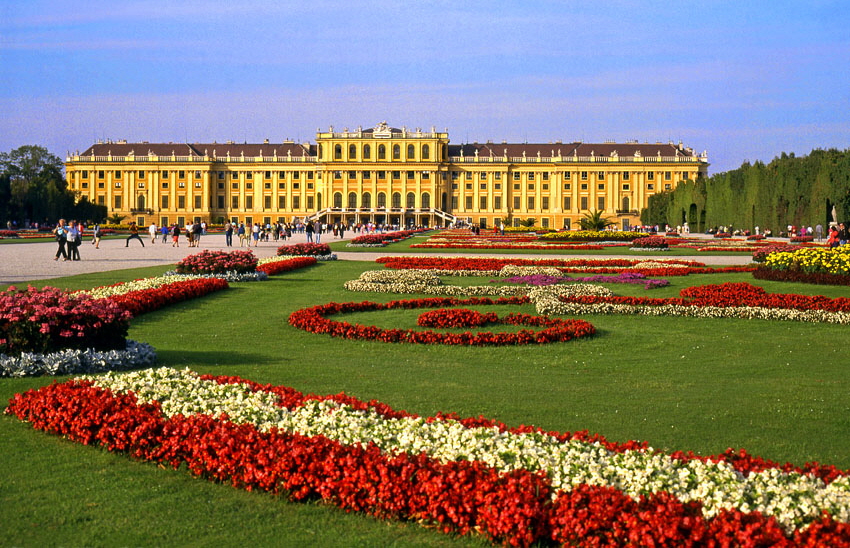
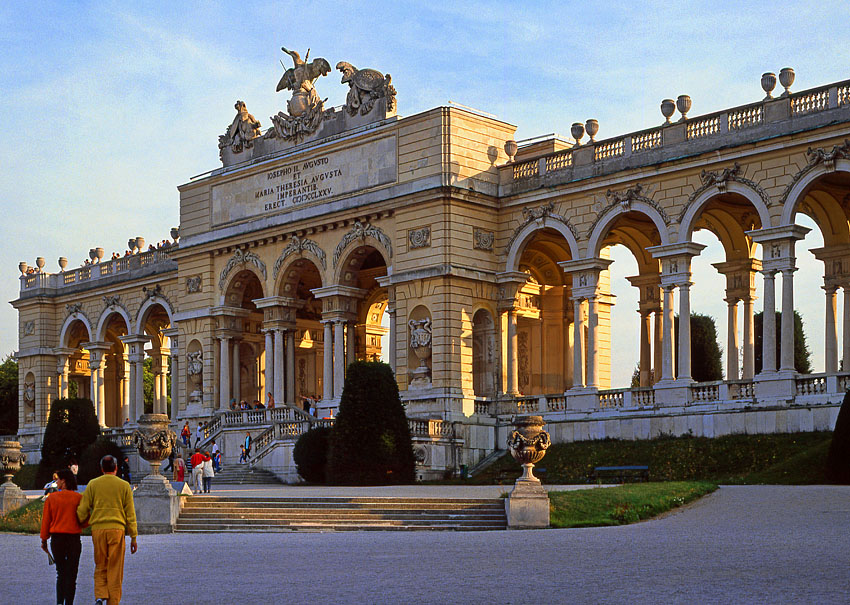
Schonbrunn Palace, Gloriette
Vienna’s other once royal palace, called simply the Imperial Palace, is now home to the Spanish Riding School, where the famous Lippizaner white stallion horses are trained. Speculator gala performances takes place there every Sunday morning, in which the horses are put through a demonstration of classical dressage movements and paces to music. Tickets can be both expensive and scarce, but if you can’t get hold of one, a dress rehearsal is the next best thing to a performance.
Among other ‘must sees’ is St Stephen’s Cathedral (Stephansdom), an amazing architectural feat which took over 400 years to build! Its multi-coloured glazed tile roof shimmers in the sunlight and massive tower reaching 446 feet tall dominates the city skyline The area around the cathedral is closed to traffic making it ideal for a stroll or relaxing at an open-air cafe.
Most of the main sights are within walking distance of the city centre, and if you don’t feel like exploring on your own, you can join one of the many excellent walking tours. Various walks are organised, taking in the subjects such as art, architecture and Viennese legends. Another takes a look behind the scenes at the State Opera House.
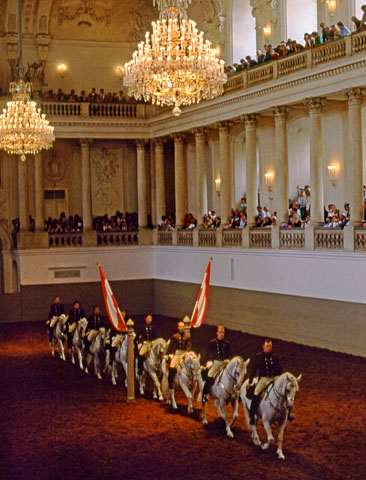
Lippizaner horse show
St Stephen’s Cathedral
Walking tour by Natural History Museum
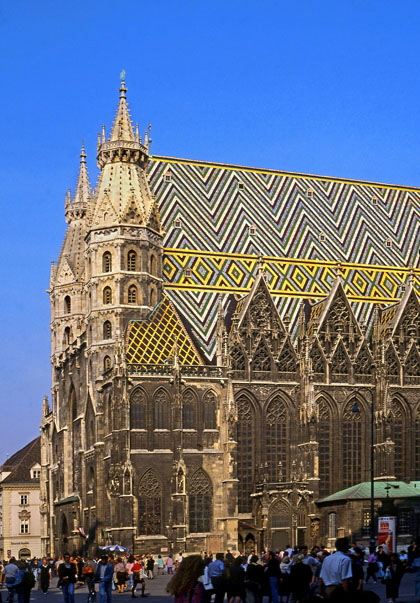
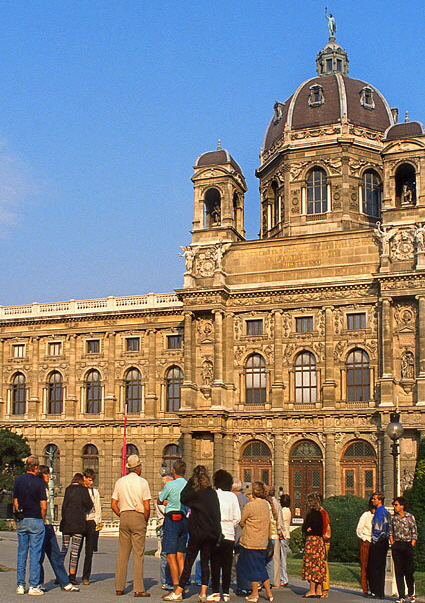
Vienna has over 100 museums, and one of the most spectacular is probably the Kunsthaus Museum, which was designed by controversial architect Friedensreich Hundertwasser. A non-believer in the accepted norms of flat floors, straight walls and uniformly shaped windows, the building is like something from another planet! A nearby housing project named after the architect is another colourful example of his work. Looking like a gigantic, gaudy jigsaw puzzle, it’s in complete contrast to the rest of the city. And for art lovers, there’s no better place than the Belvedere Palaces which house a huge array of artworks. The lovely surrounding landscaped gardens alone are worth a visit.
Back in the old part, the real joy of Vienna is soaking up the atmosphere which has inspired Europe’s great writers and musicians. The city has monuments to all the classical greats. In the summer, there are outdoor music performances and in winter there is a full programme of formal concerts.
Antique lovers can browse around the Dorotheum Auction House (largest in Europe) where many precious items for sale are displayed. Even if you don’t intend to purchase anything, time should be made for a short view.
Families with children should head for the Prater, Vienna’s oldest funfair, complete with a huge, 220-foot ferris wheel,
which was built in 1897.
Belvedere Gardens, statue
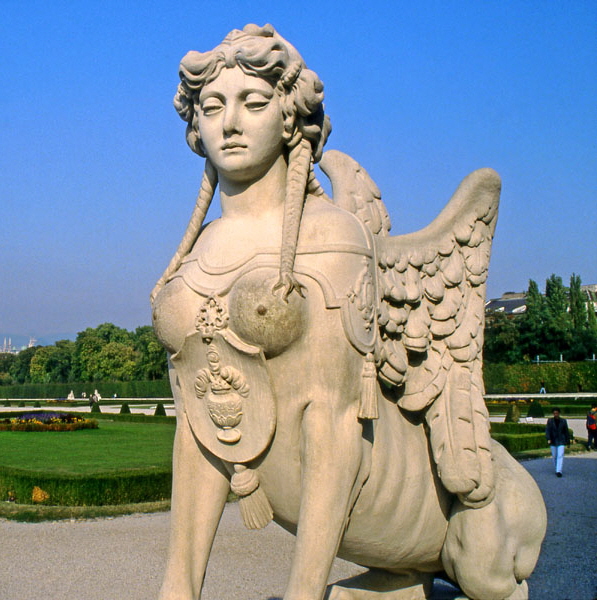
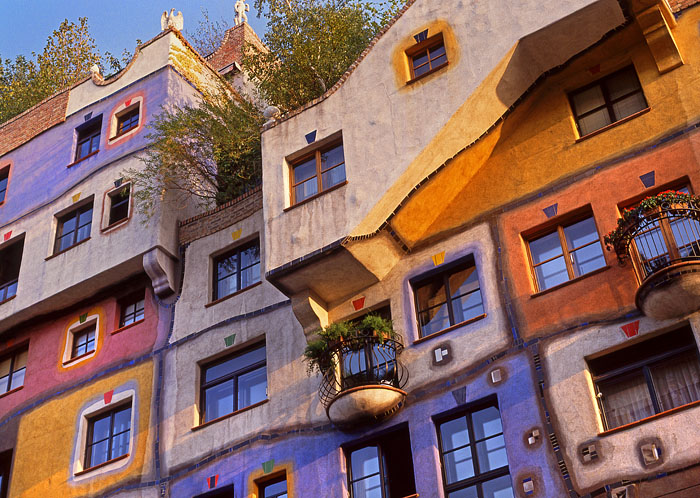
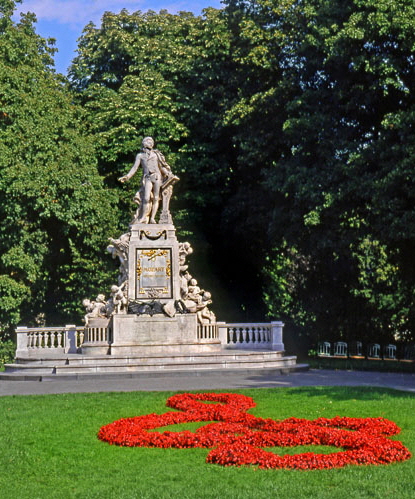
Hundertwasser houses
Mozart monument
Vienna is a compact city surrounded by woods and small communities that have maintained their village-like atmosphere. You can explore these areas and the city attractions by buying a Vienna City Card (29 Euros for three days), a pass which gives you unlimited travel on public transport, as well as sightseeing and shopping discounts. Whatever you do, you’ll never be bored.
Vintage tram tour
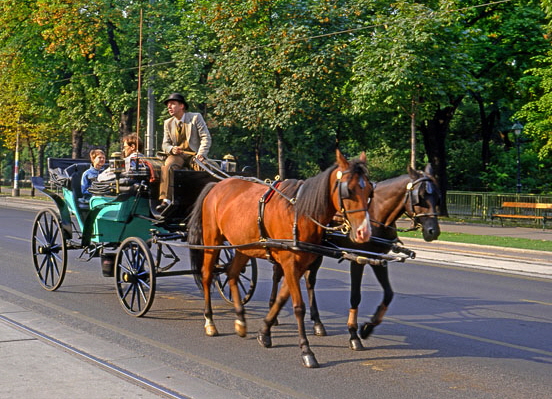
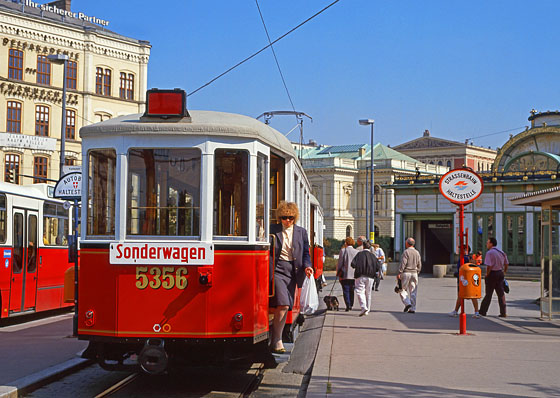
Sightseeing by horse & carriage: For many tourists, a horse-drawn carriage (fiaker) ride is one of the highlights. It is one of the most common vistas in Vienna, and a comfortable and relaxed way to enjoy the city while the fiaker driver points out the important sights and monuments. A short 20 minutes clip-clopping ride costs from around 50 Euros, to 80 Euros for 40 minutes.
Tram Tours: The city’s important sights can be also be viewed in comfort from a tram. A vintage tram of the Tramway Museum departs on its one-hour tour of the city from the Otto Wagner railway pavilion on Karlsplatz. A guide on board provides live commentary in both English and sometimes in German, of places along the way.
Coffee and cake at Cafe Central

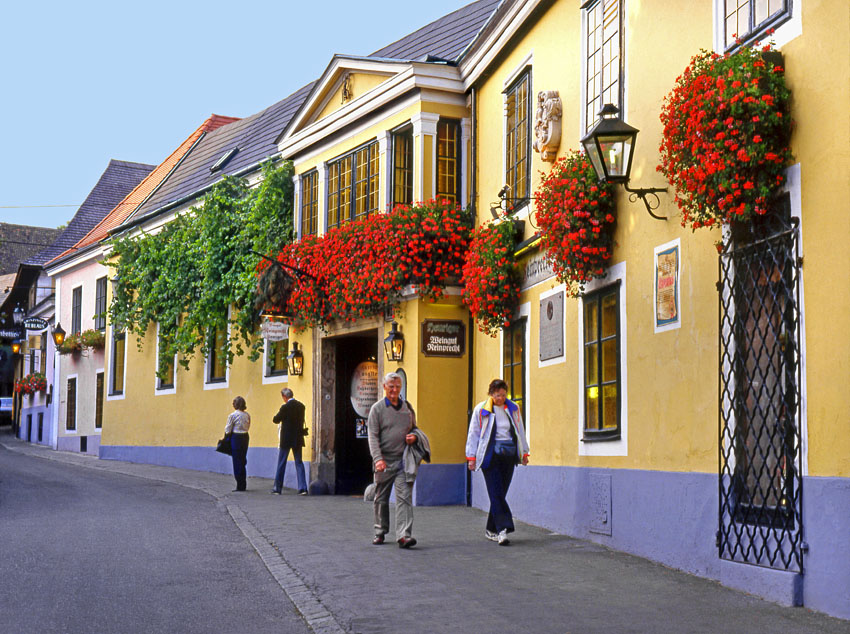
Grinzing village
Coffee Houses: A uniquely traditional Viennese institution, coffee houses are much more than somewhere to eat and drink. Locals meet there to pass the time of day, exchange gossip, and read the newspapers which are displayed on poles. There’s a vast choice of coffees (traditionally served with a glass of water), some laced with rum or whisky and topped with whipped cream. This can be accompanied by a tempting selection of calorific sweet treats like chocolate-flavoured Sachertorte. Coffee and cake costs about 15 Euros. One of the famous historic establishments with its grand interior and architecture is the Cafe Central, which opened in 1876. Whether it’s morning coffee and pastries or full dining affair, Cafe Central is an experience in Viennese culinary culture.
Shopping: Austrian porcelain and marzipan chocolates are typical buys.
For an unusual souvenir, look out for Heuriger wine. Unique to Vienna, it’s produced in small vineyards on the outskirts of the city. To enjoy it in authentic surroundings, take a tram to the village of Grinzing where you’ll find it sold in taverns close to the vineyards. Heuriger means ‘this year’s wine’. It is intended to be drunk fresh and, unlike most wines, does not improve with age. Many of the Heuriger taverns, offer outdoor dining, serving sumptuous meals with the local wine, while a violinist will perform some classical music to entertain you. You can buy bottles of wine from the taverns, instead of shops.
For more information on Vienna, contact the Austrian Tourist Office,
at www.austria.info
Getting there: Skyscanner, Kayak and Expedia all have low cost flights as well as hotels in Vienna.
Johann Strauss monument, at city park

12 images here ©JAYTRAVELPHOTOS
© COPYRIGHT notice. The images on this site are for viewing only.
To purchase any, for personal or commercial use, please contact us at jaytravelphotos@aol.com
